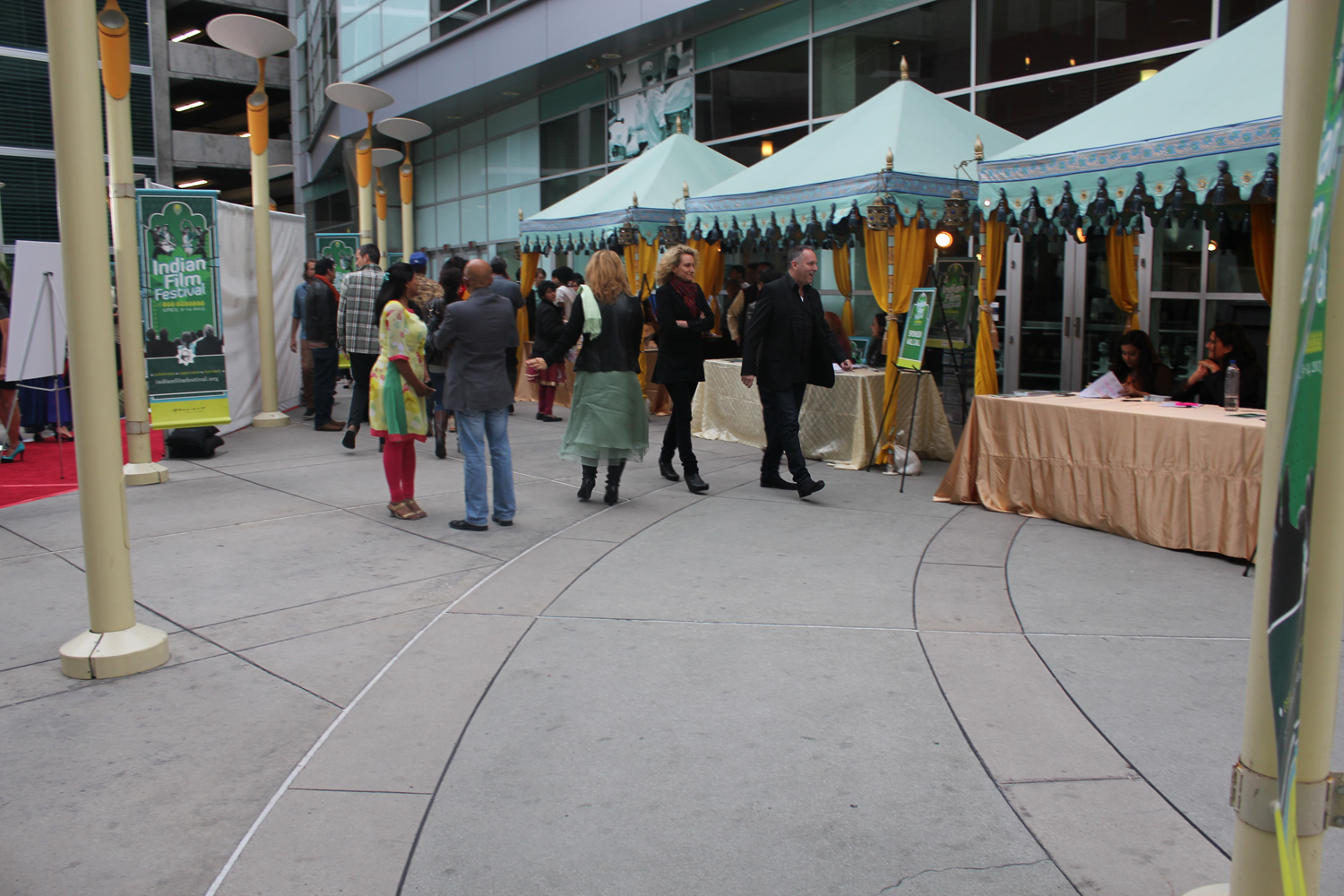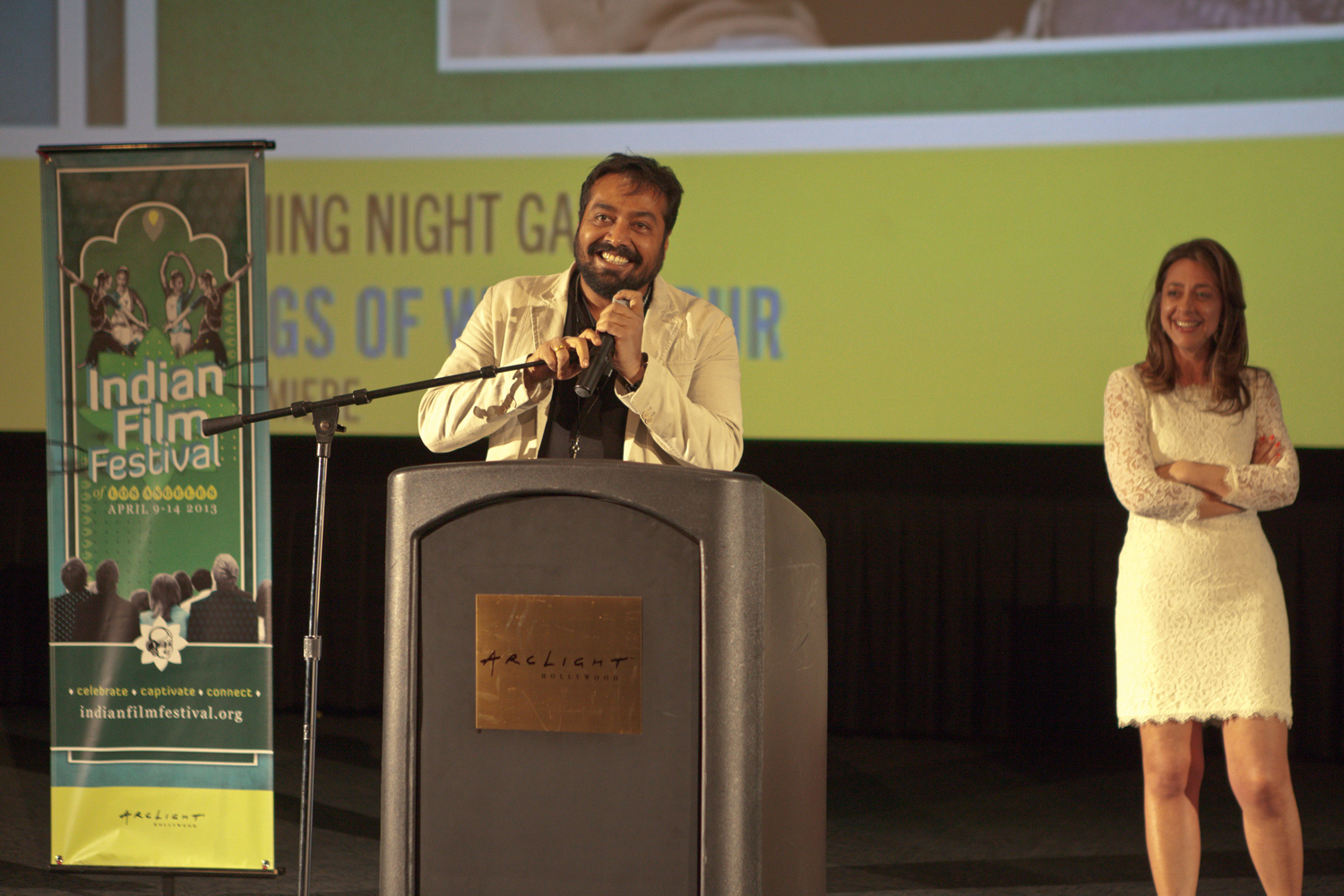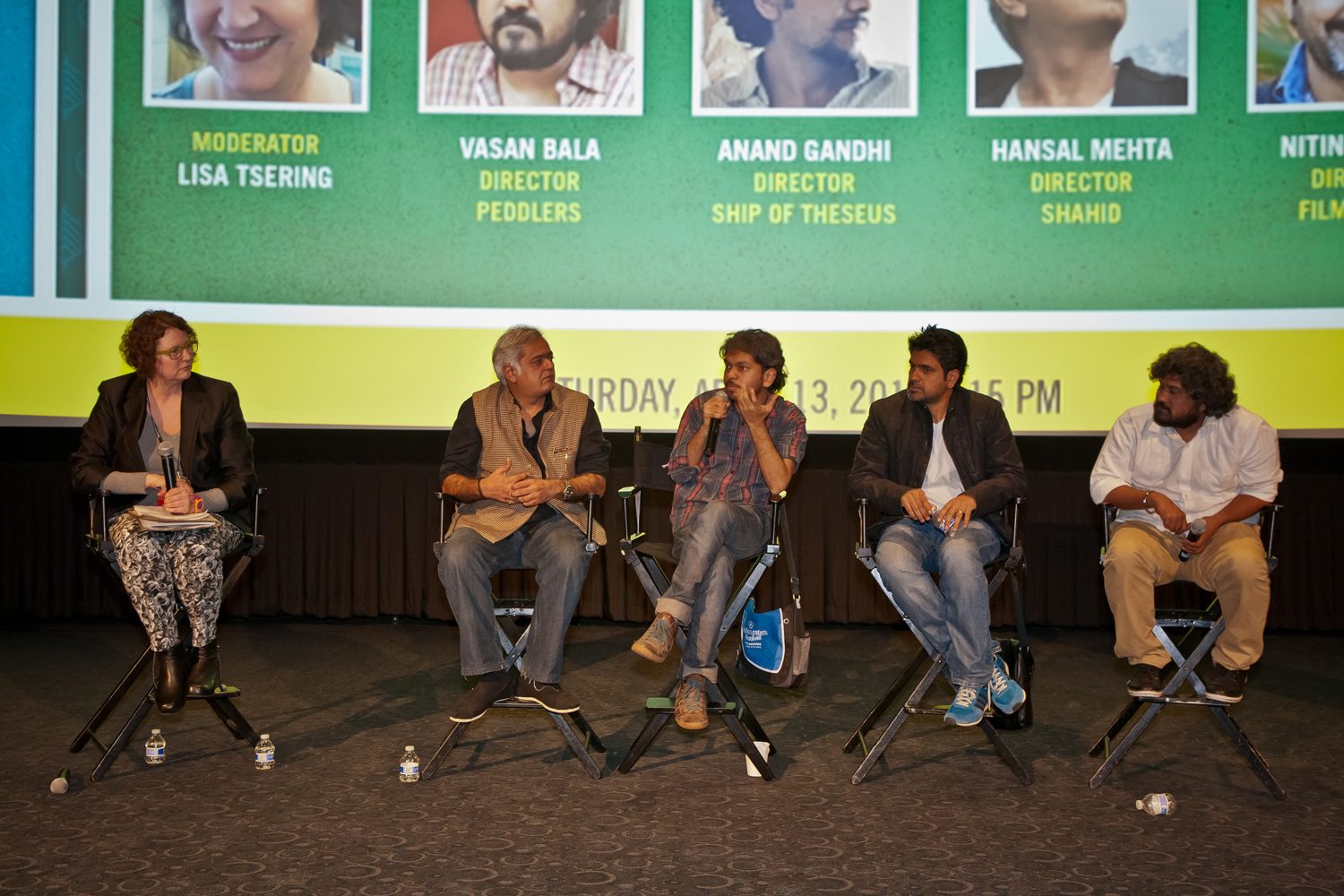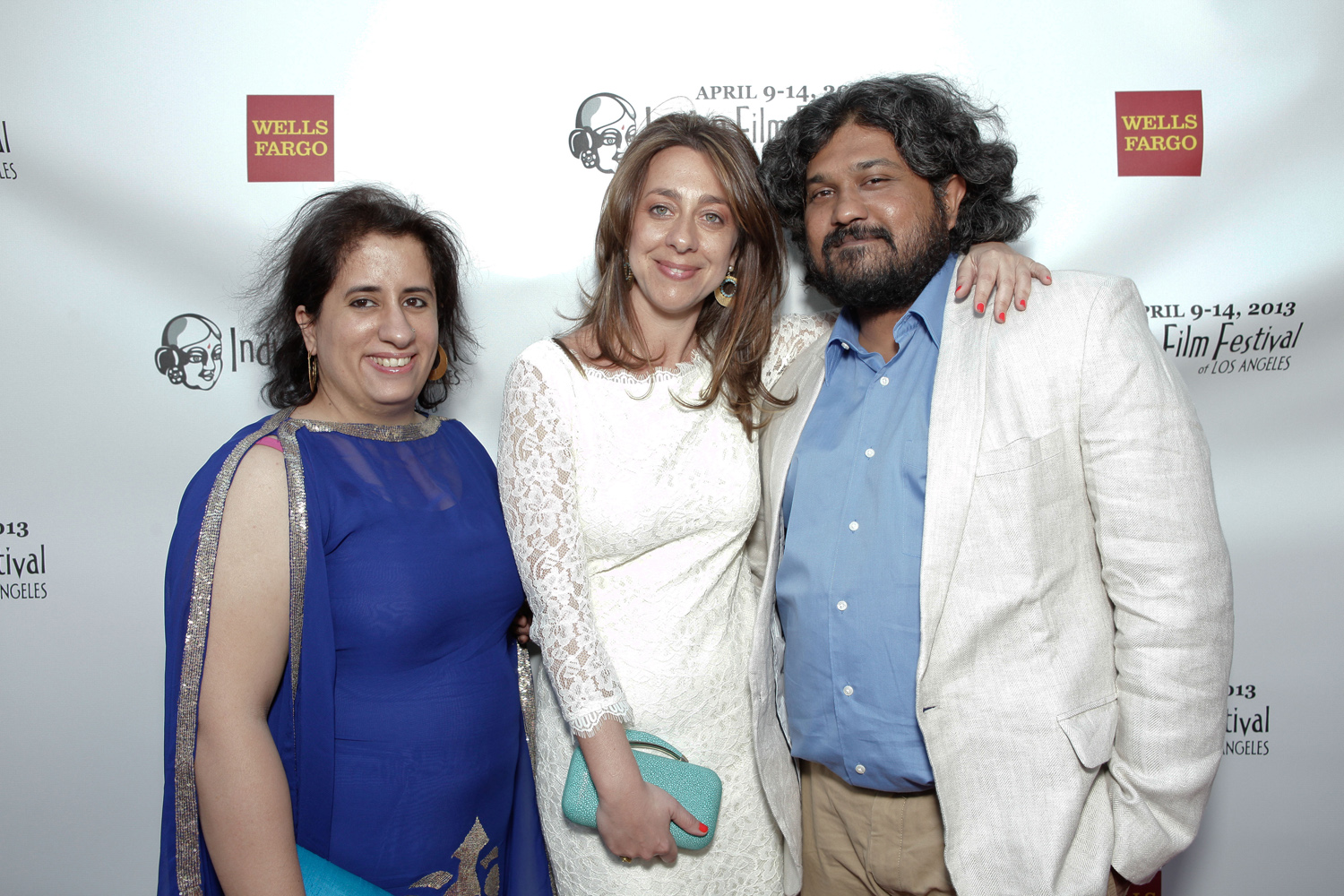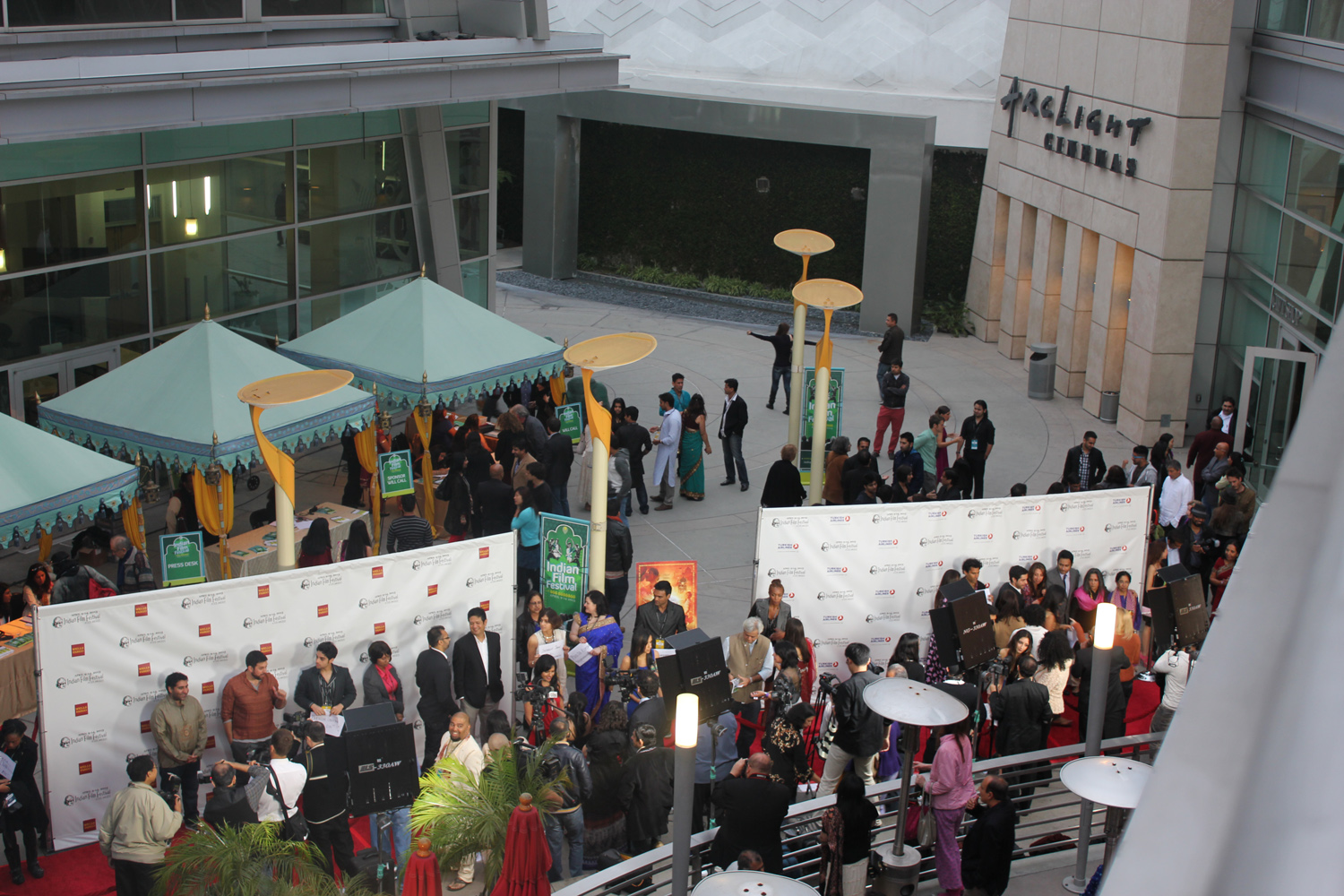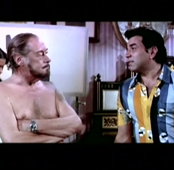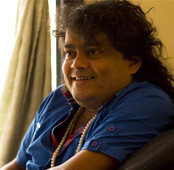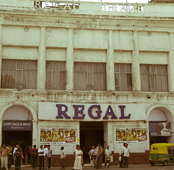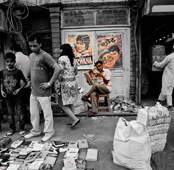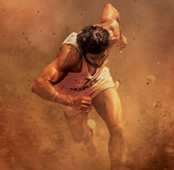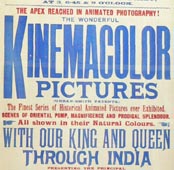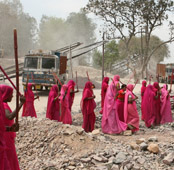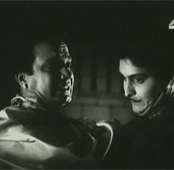-
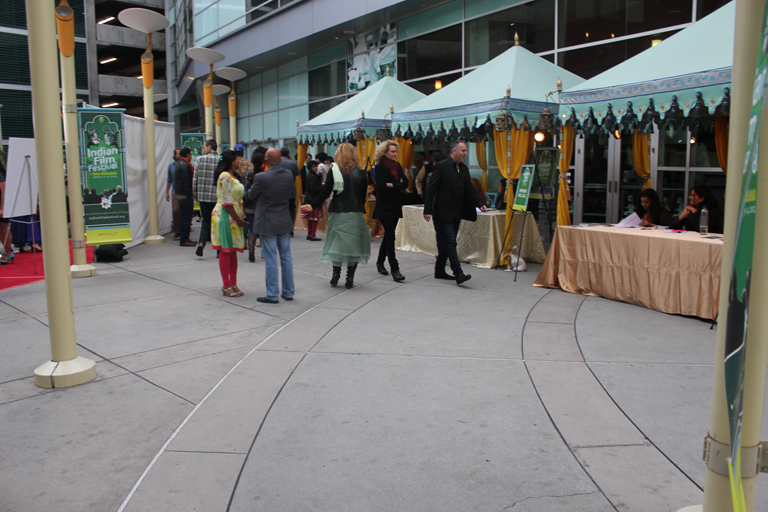 Near the entrance to the Indian Film Festival of Los Angeles
Near the entrance to the Indian Film Festival of Los Angeles -
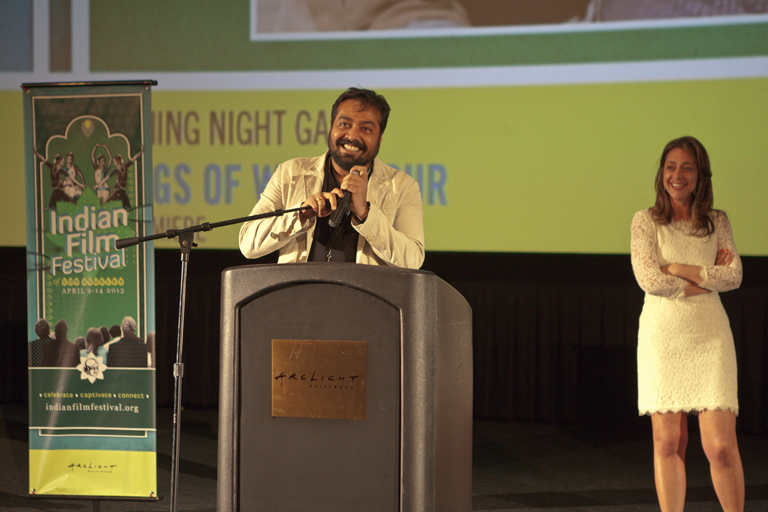 Anurag Kashyap at IFFLA
Anurag Kashyap at IFFLA -
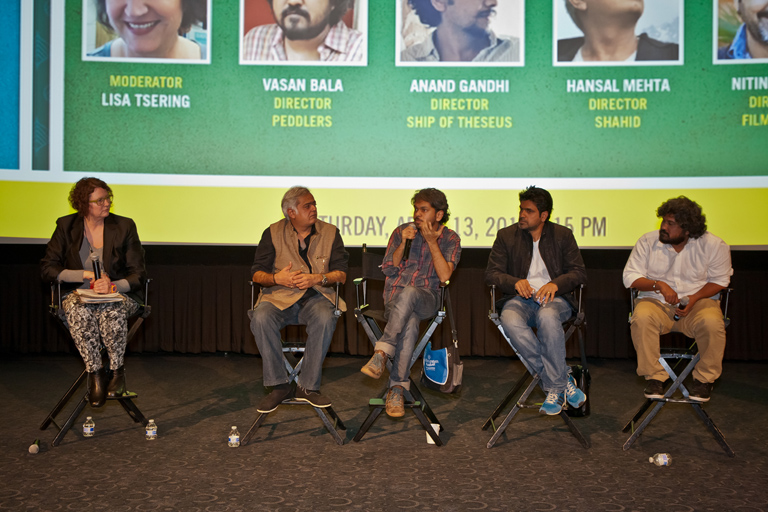 A panel discussion moderated by journalist Lisa Tsering, with filmmakers Hansal Mehta, Anand Gandhi, Nitin Kakkar and Vasan Bala
A panel discussion moderated by journalist Lisa Tsering, with filmmakers Hansal Mehta, Anand Gandhi, Nitin Kakkar and Vasan Bala -
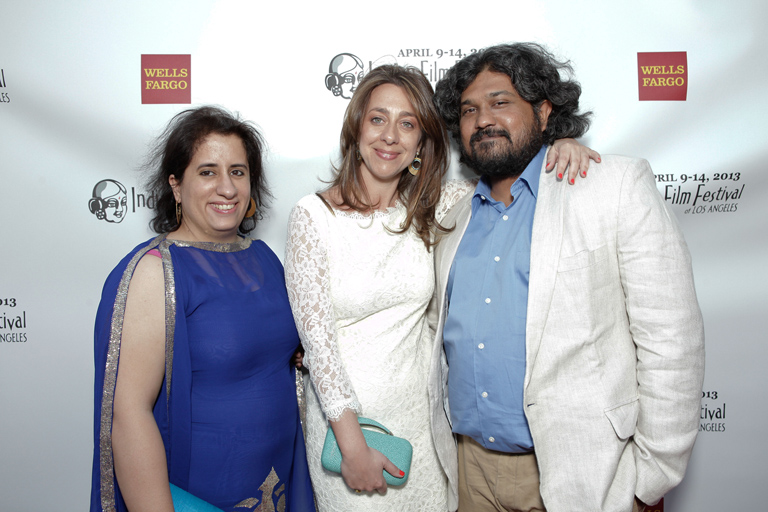 AKFPL Producer Guneet Monga, IFFLA Chairperson Christina Marouda and Vasan Bala
AKFPL Producer Guneet Monga, IFFLA Chairperson Christina Marouda and Vasan Bala -
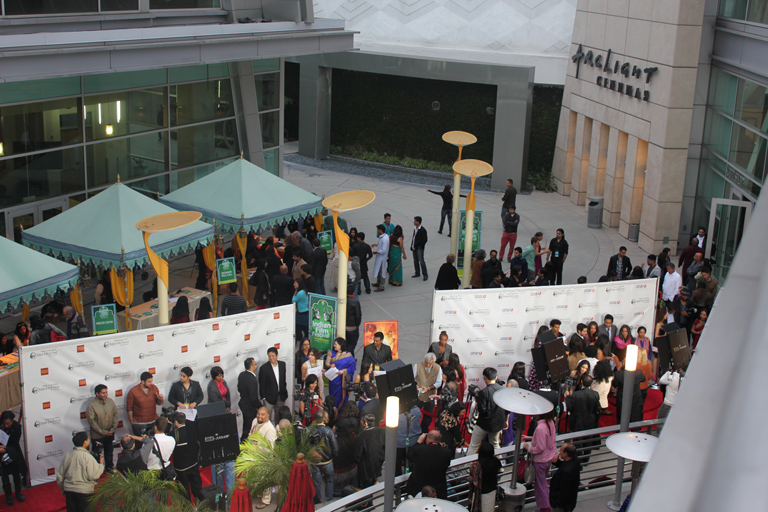 The Closing Night at IFFLA
The Closing Night at IFFLA
A report from the Indian Film Festival of Los Angeles, 2013
There’s no doubting the clout of the Indian diaspora in the United States when it comes to Indian movies. This diaspora has molded the box-office results of many commercial Indian releases in the past, so much so that it is recognized as a legitimate market now. But far from the bustle of mainstream entertainers, which the aforementioned audience usually endorses, every year in April the Indian Film Festival of Los Angeles (IFFLA) showcases, over a span of five days, diverse Indian films— mostly ones made on modest budgets, whose paths to theatrical release are littered with commercial diktats.
ArcLight Cinemas, a multiplex on Hollywood’s Sunset Boulevard, has been hosting IFFLA for the past 11 years. The festival logo—a grey and black sketch of an ‘Indian’ woman’s head, her hair in a bun, a flower near her ear and a red bindi, the only dash of colour in this portrait, on her forehead—can be seen on signs affixed to steel street lamps a few feet from the multiplex entrance, and on stands near IFFLA’s information booths. But the multiplex’s façade is too imposing, so the signs don’t quite stand out in their milieu, and are quietly absorbed. As you enter, on your left, is a sprawling yet makeshift stage, mostly used for live music and dance. On the right is a café that doubles as a sort of open lounge for the festival’s attendees to loll about in. The crowd comprises amateur filmmakers, actors, film school students, or just regular cinephiles. This is a nice place to strike up breezy conversations with filmmakers before a movie screening. It has a cosy feel. People seem accessible here, and devoid of pretence and formality.
***
Contrary to what one would expect, the IFFLA was not conceived by an NRI, rather a woman who hails from Greece, Christina Marouda. Cinema has often been extolled for its power to transcend geographical and cultural boundaries; Marouda’s story serves as a fine example. Growing up in Greece, she was enamored by Indian cinema, and did not shrug her passion even after she moved to the United States. “I had worked at a couple of international film festivals in Los Angeles, and was surprised that India had been overlooked at film festivals in the US. Considering that there’s a large South Asian population in Los Angeles, I felt Indian cinema needed a platform,” says Marouda, IFFLA’s chairperson. One fortuitous afternoon in 2001, she walked into a crowded theatre, in the heart of Los Angeles, screening Lagaan, and was convinced that Indian cinema had a market. Her interest in Indian cinema and the confirmation of its demand culminated in IFFLA. Established in 2002, the festival is now among a handful in the US that focus exclusively on Indian cinema. It is the second film festival in the country to do so, the New York Indian Film Festival (NYIFF) being its senior by a year-and-half. Outside India, the idea of an Indian film festival is still in an inchoate state. USA is the only country where Indian film festivals have begun to mushroom, albeit at a sluggish pace. Besides IFFLA and NYIFF, there are three other Indian film festivals in the US: the South Asian International Film Festival, the Indian Film Festival of Houston, and the India International Film Festival – Tampa Bay.The festivals at Houston and Tampa Bay have been around for less than five years.
***
Filmmakers are integral to any film festival. Filmmakers who screen their films at a festival, or those who simply attend it. It would not be amiss to say that the significance of a film festival is largely a function of how it supports the film community. This year at IFFLA, filmmakers such as Mira Nair and Deepa Mehta were present for their respective movies’ screenings. Also, filmmaker Anurag Kashyap. In fact, quite a few of those present at IFFLA this year have been involved in some way or the other with Kashyap’s production house Anurag Kashyap Films Pvt. Ltd. (AKFPL), that has been credited with being at the helm of a new kind of Hindi cinema, often called ‘New Bollywood’, and whose movies have been visible of late at key festivals around the world. There is Guneet Monga, Producer at AKFPL, Nawazuddin Siddiqui and Manoj Bajpai, who have acted in AKFPL’s Gangs Of Wasseypur (directed by Kashyap) and directors Hansal Mehta and Vasan Bala, whose movies AKFPL has produced. “IFFLA is very relevant for us Indian filmmakers. It’s a place where you come to discover new Indian filmmakers. Initially, when all my films were banned, I screened Black Friday and Paanch here, and they drew a lot of attention,” says Kashyap, whose Gangs of Wasseypur opened the festival this year.
Also, the credibility of a film festival hinges a lot on the kinds of movies it espouses. The relationship is symbiotic— the films feed off the visibility gained at the festival; in return accomplished movies elevate a film festival’s stature as few other things can. In the past, IFFLA has done a fine job of culling interesting, independent movies: Supermen of Malegaon, Sita Sings the Blues, Leaving Home: the Life and Music of Indian Ocean, Patang, among other notables. However, this year’s lineup is disappointingly lopsided: on the one hand, there are unreleased small independent movies that have been lauded across a wide spectrum: Miss Lovely, Ship of Theseus, Celluloid Man, Peddlers. And on the other hand, there are movies that were released commercially almost a year back: Gangs of Wasseypur, Arjun: The Warrior Prince, Eega. Film festivals are pivotal in providing visibility to movies that are still getting discovered, still finding their audience. So, it’s a bit difficult to ascertain what these done-and-dusted movies bring to the festival.
Film festivals are also significant because they facilitate a much required confluence of art and commerce. They provide many emerging, independent filmmakers the coveted opportunity to network and find suitable buyers for their movies. “Being in the heart of Los Angeles, IFFLA puts the filmmakers in touch with so many people who are looking for new interesting voices. For instance, on the first day of the festival, there were seven studio representatives and many producers,” says Kashyap. Andy Bird, Chairman, Walt Disney International (in charge of Disney’s business outside the US) had been honoured by IFFLA in 2008. This year, just over a year since Disney acquired UTV (one of India’s biggest motion picture producers), he is the keynote speaker at the festival.
IFFLA had also instituted a Film Fund Development Grant that awarded $10,000 to Kranti Kanade for his script, Against Itself, which was made into a feature length movie, Gandhi of the Month, starring Harvey Keitel. This was in 2009; since then, the award has been discontinued due to a lack of sponsorship. “I would love to see more funding coming through, more funding from India. To this date, we have hardly received any funding from India,” says Marouda.
ArcLight Cinemas is a 14 screen multiplex that usually screens mainstream Hollywood releases. During the course of the festival, two to three screens are reserved for the movies screened at IFFLA. IFFLA hardly commands any exclusivity at this venue. Its three small booths in front of the multiplex are rather inconspicuous, and the buzz around them insubstantial. Also, its efforts to attract the spotlight appear rather frivolous: Bollywood songs blare unabashedly from the booth, at times the stage is occupied by an A cappella group, and at times by a bunch of dancers prancing to the music. The dance, the music, and the overt familiarity of the set up; do you need a film festival for these bubblegum exotic reaffirmations? Especially since, ultimately, all this hoopla achieves little. Minutes before the Peddlers screening, I found myself talking to an American moviegoer outside the multiplex’s entrance. “So, are you here for the film festival?” I asked. “What film festival?” he replied.
It is not uncommon for people to equate Indian cinema to Bollywood. This parochialism is heightened outside India, where disparate regional movies seldom release. Film festivals like IFFLA can do their part to dispel this perception. But has it? In terms of its cinema, how indicatively, if not comprehensively, ‘Indian’ is IFFLA? Despite its assiduous efforts, it could do a lot more. Shrugging the Bollywood hangover could be the first step. For IFFLA, a film festival primarily interested in promoting Indian cinema, its oft-recurring feature ‘Bollywood by Night’—an event that showcases Bollywood movies—seems to be at odds with the festival’s own ambition. For those few screenings, the spotlight shifts to Bollywood; this constricts the festival’s focus, and veers it away from its original purpose. “I don’t understand some of their past movie choices. What were movies such as 3 Idiots or My Name is Khan doing at a film festival?” says Aman Segal, an independent filmmaker and a regular attendee at IFFLA.
IFFLA has also paid tribute to film personalities over the years by screening their movies at the festival. But these too have been centred around Bollywood, which is as confounding. Why would a film festival that intends to reach far and wide within the domain of Indian cinema choose to pay tribute to mainstream actors like Anil Kapoor and Madhuri Dixit? Not that their contribution to Indian cinema should be undermined, but when there’s a host of Indian film personalities to choose from, some of whom have provided a radically different dimension to the Indian motion picture, why restrict such tributes to those in the mainstream?
One can sense that IFFLA is trying hard to find a balance— between being frothy and sincere, between hosting Bollywood and truly Indian cinema, between being visible, and spoken of, and being niche, but relevant. It’s never an easy thing to do. You win some, you lose some. But the important thing is to fret over the right choices, because being small and being insignificant are two very different things.
To Bollywood or not to Bollywood
ArticleApril 2013
 By Tanul Thakur
By Tanul Thakur
Tanul Thakur graduated from the University of Illinois at Urbana-Champaign with a degree in electrical engineering. He prefers watching movies alone and spends most of his free time in a local indie theatre scouting lesser known movies. He is based out of Fort Collins, Colorado.



